
|
After crossing Old Woman Creek and turning west, the LSE and CSW tracks crossed in a diamond about 1500 feet north of the intersection of Berlin Road and Ohio Route 113. This crossing was also protected with manual derails on both tracks. Stop 164 was at Berlin Road, only a few hundred feet beyond the crossing. Another siding, called Mason's siding, was located between the road and the crossing, easily accessible to farmers' wagons and trucks. Conductor's logs show the siding was used for seasonal farm freight in the same way as the spur at the station. Berlinville Southwest of Berlin Heights, at the intersection of present state routes 113 and 61, is the tiny settlement of Berlinville. This rural hamlet once had a measure of importance, being a stop on the Cleveland to Detroit stagecoach route established in 1830, and for many years was the site of the only post office in the township. The stagecoaches disappeared with the coming of the steam railroads, and other post offices were opened, leaving Berlinville little with which to make its mark. Local farmers patronized the tavern and general store and it continued as a minor business center between its far more prosperous neighbors. Lake Shore Electric stop 164½, was located at the crossing of State Route 113 and included a small waiting station for passengers. After crossing the road, the LSE tracks followed the west edge of State Route 61 southwest toward Norwalk. Boomtimes Unrealized The interurbans brought many modern conveniences to Berlin Heights and greatly improved small town life for its residents. For various reasons, however, the boom of growth and prosperity that had been expected in 1901 never materialized. A population shift did occur, but it was actually the opposite of early expectations. A number of farming families in Berlin Heights moved to the cities and the population of the village decreased. Fewer people and fewer farmers meant less passenger and freight revenue for the interurbans. By the 1920's the Cleveland Southwestern was losing money and could not compete with the Lake Shore Electric's faster service. November 7, 1923 saw the last CSW run through Berlin Heights, after which the Oberlin to Norwalk route was abandoned. Throughout the 1920's multicar trains split at Ceylon Junction, with at least one limited car traveling the southern division through Berlin Heights. A 1922 timetable shows a total of 16 limiteds, 8 in each direction, passing through the village every day. But the roaring 20's couldn't last forever. By the late 20's multicar trains were coming to an end, and the southern division was falling out of favor due to several features that hampered high speed operations. Entering Berlin Heights from the north, cars climbed a 3.5% grade (steep by railroad standards) and had to stop to close derails at the Nickel Plate railroad crossing. The route into Norwalk was also quite hilly, and additional railroad crossings further slowed schedules. By 1932 all Cleveland - Toledo cars were being routed through Sandusky, while older cars worked shuttle duty on the southern division. Later in the decade, Lake Shore Coach Co. buses began to assume more of the southern division runs until rail service finally ended in 1938. After the LSE Like the rest of the line, the rails through Berlin Heights were pulled up and the steel girders of the trestle over Old Woman Creek were removed and sold for scrap. The substation survived a few more decades, used for storage by the utility company which continued to use the LSE right-of-way for transmission lines. It was finally demolished in 1963, but did not go quietly. A bulldozer attempted the demolition but was thwarted by the sturdy brick and thick concrete construction. A wrecking ball on a derrick was necessary to finally bring it down. North of town the right-of-way is still clearly visible alongside Route 61, especially where the roadbed veers away from the road and climbs the hill. Commercial power transmission lines still follow the entire route. The site of the substation is only a vacant lot now, but near the Riverside Cemetery, along Old Woman Creek, the concrete piers of the Berlin Heights trestle still exist. Like its sister in Bay Village, this represents one of the largest LSE artifacts still standing. The trestle is obscured by trees and brush much of the year, hidden even when one is standing only a few yards away. But during the winter and early spring it is clearly visible from South Street or from within the cemetery grounds. Patches of ballast and cinders are still present on the roadbed leading up to the trestle. The concrete on many of the piers is crumbling, exposing the reinforcement rails inside. In the valley below, some of the sandstone footings of the original wood trestle can still be found. Amazingly, both the concrete trestle and the older stone footings survived the destructive flood of July 1969 that devastated other bridges in the area. At the south end of the trestle, the two track alignments, pre- and post-1917, can be seen side by side. A few concrete culverts still exist along the right-of-way southwest of town. The most impressive is at Berlinville where the tracks crossed a tributary of Old Woman Creek. The culvert was made of sandstone blocks originally, but was rebuilt and widened with concrete, probably around 1913 when many other culverts and bridges were rebuilt. The right- of-way in this area and on toward Norwalk is maintained and cleared by the utility company and easily followed. Most of the old buildings at Berlinville are gone, but the old general store remains. Built sometime before 1900, possibly as a hotel, it has since served as a general store, tavern, and is now a two family residence. Berlin Heights remains much as it was at the turn of the 20th century. This lack of development and expansion has not only preserved a small rural town with many of its historic buildings on a quaint main street, but has also preserved some remains of the Lake Shore Electric, which once promised to turn the small village into a booming city. |
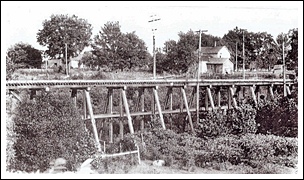
standing on sandstone footings. (Dennis Lamont) |
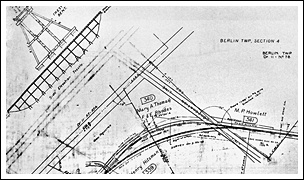
and a cross section of the wood bridge. (Dennis Lamont) |
|
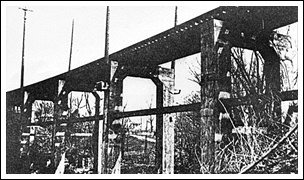
inventory undertaken for bankruptcy proceedings. (Dennis Lamont) |
|
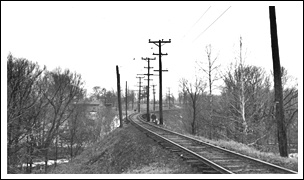
January 30, 1937. (Dennis Lamont) |
|
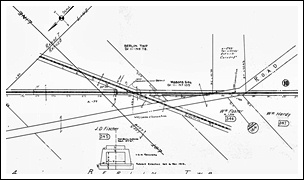
nearby concrete culvert which still exists. (Dennis Lamont) |
|
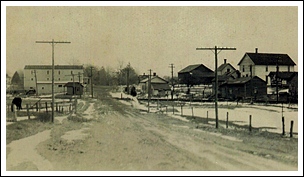
Berlinville. Notice the waiting station at left. View is to the east. (Dennis Lamont) |
|
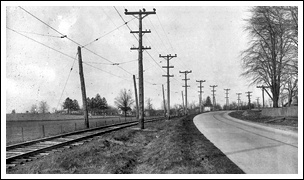
and Berlinville. View is to the north, taken in 1928. (Dennis Lamont) |
|
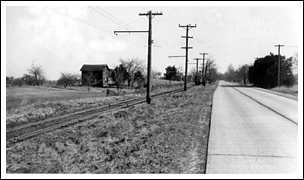
southbound along Rt 61 on March 6, 1938. (Ralph A. Perkin photo) |
|
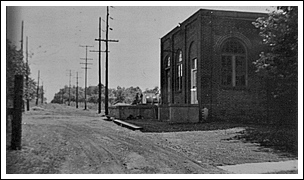
The substation was being used for storage by the Ohio Edison electric company. (Dennis Lamont) |
|
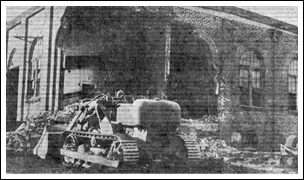
Berlin Heights substation in 1963. It required a wrecking ball. (Dennis Lamont) |
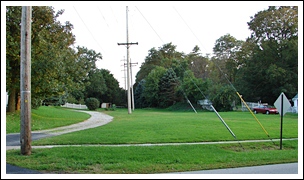
Ohio Edison. Electric lines mark the old right-of-way. (Paige Sanders photo) |
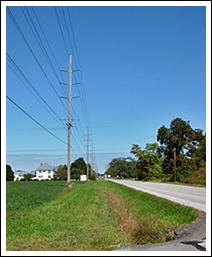
Deehr Road and Rt 61 in 2009. (Drew Penfield photo) |
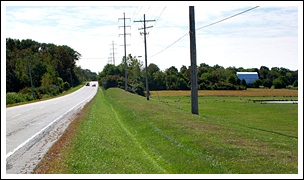
north limits of Berlin Heights. (Drew Penfield photo) |
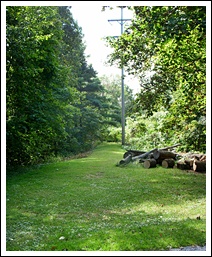
by trees and brush in summer months. (Drew Penfield photo) |
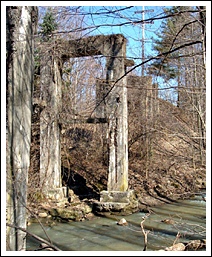
(Dennis Lamont photo) |
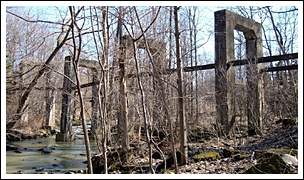
complete, despite some leaning piers. (Dennis Lamont photo) |
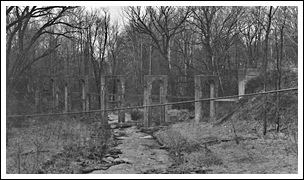
(Tom Bailey photo) |
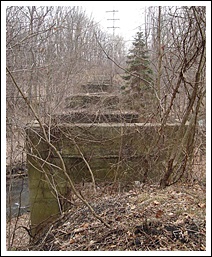
(Dennis Lamont photo) |
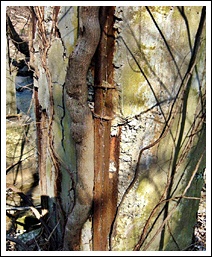
used for interior reinforcement. (Dennis Lamont photo) |
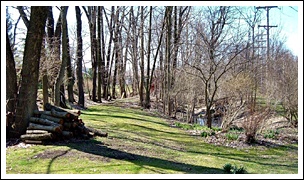
with pole line, at right. (Dennis Lamont photo) |
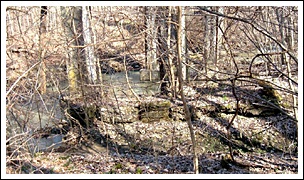
still in place. (Dennis Lamont photo) |
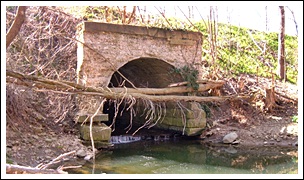
sandstone construction at bottom. (Dennis Lamont photo) |
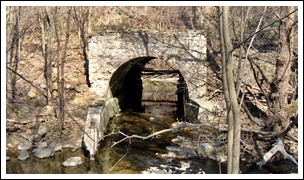
of concrete. (Dennis Lamont photo) |
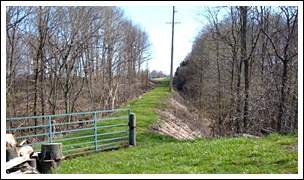
Berlin Road. (Dennis Lamont photo) |
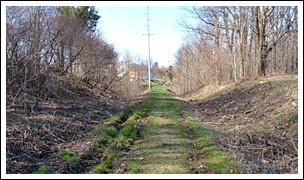
(Dennis Lamont photo) |
|
|
|